The Loudoun County Board of Supervisors has scheduled a public hearing on proposed zoning changes to the county’s Steep Slopes rules for 6 p.m. Wednesday, June 10, in the county government center in Leesburg. Please come to make your voice heard.
The changes, proposed by the Zoning Ordinance Action Group (ZOAG, a board appointed by the Board of Supervisors). would open hundreds of acres of fragile landscapes to more intensive development.
The Coalition has submitted a letter to the Board of Supervisors in opposition to many of the proposed changes. Below is a comprehensive report (you also can download it here) on the proposed changes, prepared by the Coalition’s Executive Committee.
PROTECT STEEP SLOPES FROM ADDITIONAL DEVELOPMENT
Prepared by the Executive Committee of the Loudoun County Preservation and Conservation Coalition
June 10, 2015
INTRODUCTION
The Executive Committee of the Loudoun County Preservation and Conservation Coalition opposes the proposed zoning changes for Steep Slopes (ZOAM 2014-0004) whose purpose is to open up additional land for development. We support those changes which are designed to make the Steep Slope zoning regulations more efficient and easier to administer including the elimination of “man-made” steep slopes from regulation, the addition of geo-technical studies, and the clarification of agricultural operations.
We oppose adoption of the following Zoning Revisions to the Steep Slopes Standards Section 5-1508:
- We oppose allowing by minor special exception any use permitted in the underlying zoning to be approved in steep slope areas.
- We oppose allowing by minor special exception the modification of any of the development standards for very steep slopes.
- We oppose the expansion of the Very Steep Slope area exempted from regulation from 5,000 square feet to 10,000 square feet.
- We oppose certain changes in the development standards which will permit additional development beyond that permitted in the existing regulations.
The Board of Supervisors in considering these zoning changes will be deciding whether Loudoun’s 15,600 acres of Very Steep Slopes are a vital environmental asset with economic benefit or simply engineering challenges to be overcome to accommodate development as the ZOAG proposals imply. If these amendments are approved it will mean 653 properties in Western Loudoun potentially could be effected and 470 acres of Very Steep Slopes could be lost to development along with 235 acres in Eastern Loudoun.
THE RATIONALE FOR STEEP SLOPE PROTECTION
Inappropriate Expansion of the ZOAG Mandate
The ZOAG Mandate from the Board of Supervisors was to prepare amendments that “make the zoning ordinance more business friendly.” However, the ZOAG has gone beyond this mandate in order to open up fragile Steep Slope land for additional development that would not otherwise be permitted.
In making these proposals the ZOAG is changing years of County environmental policy to “minimize” impact on Steep Slopes to a new policy to “mitigate” development on Steep Slopes. This is a policy change that has potentially large costs to the taxpayers, is inconsistent with the Comprehensive Plan, and is destructive environmentally.
The Economic Objections to the Proposed Zoning Changes
The Board of Supervisors has recognized that residential development does not pay its costs in property taxes. Additional residential development on steep slopes, permitted through the proposed zoning changes, in rural Loudoun will occur By-Right so no proffers will cover the County’s cost in capital facilities required for single family houses.
Furthermore, there could be substantial economic losses from increased flooding, loss of ground water recharge area, increased stream pollution and erosion as well as possible problems with septic systems.
The General Plan Conflicts with the Proposed Zoning Changes
The General Plan in Chapter 5 on The Green Infrastructure sets the rationale and policies covering Steep Slopes and Moderately Steep Slopes. It states:
“Steep slopes and moderately steep slopes occupy an area of approximately 53,000 acres in the County. Moderately steep slopes are areas with a 15 to 25 percent grade… Steep slopes refer to more environmentally critical slopes of greater than 25 percent grade.
If improperly used and disturbance occurs, these areas could experience erosion, building and/or road failure, downstream flooding, and other hazards. For this reason , the grade of a steep slope is often a factor of unstable soils. Development on steep slope often requires high volumes of clearing and cut and fill. Such earth moving is subject to erosion and sedimentation that causes adverse effects on surface water quality and aquatic habitat.
Steep slopes represent a resource as well as a constraint to development. Steep slopes protected as part of a river and stream corridor or mountainside often serve as forested and vegetative areas that filter storm water run-off and support various plant and wildlife habitat.”
- The County will prohibit land disturbance on slopes with a grade of more than 25 percent and/or with the soil Slope Class of E. (emphasis added)
- The County will prohibit construction of roads on slopes with grades over 25 percent with the exception of access easements to existing lots where no other access is possible. Performance standards will be applied to protect the soils, vegetation and other environmental features in areas in which these roads are allowed by special exception. (emphasis added)
- Special performance standards are to be used to protect slopes with grades from 15 to 25 percent and/or with the soil Slope Class D. These standards will include best management practices, locational clearances and clearing and grading, and approval of natural drainage ways.
- There will be no building on unstable soils, including soil series Morven…Airmont…Lew…and Springwood…as described in the County’s Interpretive Guide to the Use of Soils Maps in Loudoun County, Virginia. (emphasis added)
- The County will encourage development rights to be sold, donated, or proffered from land with a 15 to 25 percent grade.
The Environmental and Engineering Objections to the Zoning Changes
Preserving the structural integrity of Steep slopes is important. Destroying the plant cover on steep slopes allows rapid storm water run-off, increased sedimentation and erosion which in extreme cases can lead to landslides. As soil is lost, fewer plants and animals are able to survive on the slope leading to reduced bio-diversity. Very old trees are often found on steep slopes and these trees are part of our natural heritage. Maintaining the structural integrity of Steep Slopes also preserves the aesthetic value of view sheds which in turn contribute to property values and supports the tourism value of the scenery.
In both steam and upland areas, the threshold of instability on a slope (amount of steepness where instability is a concern) is highly variable and dependent on the soil type, vegetation, length and age of the slope.
REASONS FOR OPPOSITION TO SPECIFIC STEEP SLOPE ZONING AMENDMENTS
Do Not Allow Additional Uses or Activities on Steep Slopes
Section 5-1508(D)(1)(C)(viii) & (ix)
This regulation, currently, limits land disturbance in Very Steep Slope areas to the specific uses and activities listed in the Steep Slope Standards. The revision proposed would allow any permitted use or minor special exception use in the underlying zoning district be allowed by Minor Special Exception in the Very Steep Slope areas.
We agree with the County Staff position in opposition to this revision which states: “County Staff does not support the draft text proposed by ZOAG, which is not consistent with the Revised General Plan, Chapter 5, Steep Slopes and Moderately Steep Slopes, Policy 1 which seeks to limit environmental impacts by prohibiting land disturbance on Very Steep Slopes. Allowing more uses in Very Steep Slope Areas will increase development and land disturbance in areas that are recognized as a valuable natural and economic resource, and are known for issues of instability and increased erosion causing an impact on water quality, and unsafe traffic access.”
The Planning Commission also recommends rejection of the ZOAG proposal for use of a minor special exception.
To open up these environmentally fragile areas to a broad range of possible new uses which could significantly increase the land disturbance and development impact would be a serious mistake.
Further, this is not an appropriate use of a “minor special exception.” A special exception is related to uses which may be permitted in a zoning district, if listed in the district’s permitted uses only (not permitted elsewhere in a Zoning Ordinance) only upon a showing that such use in a specific location will comply with all conditions and standards specified in the zoning ordinance and/or imposed by the Board of Supervisors. The proposal to “add uses that are not included under the permitted uses list within Very Steep Slope Areas” through minor special exceptions will set a very dangerous precedent.
Do Not Allow the Use of Minor Special Exceptions to Override Development Standards
Section 5-1508 (E)
The proposed use of Minor Special Exceptions to allow developers to override any of the development standards in Very Steep Slope Areas has the potential to undermine the entire integrity of the Steep Slope standards. It would place the burden upon the County Staff to defend the standards by researching the engineering and environmental implications of whatever proposal a developer wishes to make and to educate the Board of Supervisors on each request.
The Staff opposes this proposal as follows: “The draft text proposed by ZOAG is not consistent with the Revised General Plan…which seeks to limit environmental impacts by prohibiting land disturbance on Very Steep Slopes. Adding to the ability to modify the performance standards could increase development and land disturbance in areas that are recognized as a valuable natural, and economic resource, and are known for issues of instability, increased erosion, causing an impact on water quality, and unsafe traffic access.”
The Staff also raises the vital point that if this ZOAG proposal is adopted there is no review criteria that can be used for evaluating a modification request.
The Planning Commission recommendation for the use of a full Special Exception is more responsible than the ZOAG proposal, but there is already a vehicle for resolving these kind of issues and that is through referral to the Board of Zoning Adjustment. There is no need to bog down the work of the Board of Supervisors with this type of issue.
Do Not Allow the Increase in Steep Slope Area
Section 5-1208 (C )(2)
The ZOAG proposed amendment would have existing regulations not apply to (i) isolated very steep or moderately steep slope areas that are less than 10,000 square feet in land area, or (ii) steep slope areas where the area of disturbance is less than 15 feet in width. In such cases where the entire contiguous area is equal to or greater than 10,000 square feet, but the total very steep slope area is less than 10,000 square feet, then such entire contiguous area shall be subject to the development standards for moderately steep slope areas in subsection 5-1508(F)…”
We oppose enlarging the exempt area from 5,000 sq ft to 10,000 sq ft because it will avoid staff review of potential environmentally significant features. The proposed area which could be 20 feet by 500 feet is too large to not be subject to very steep slope standards. A grading permit is required for any proposed land disturbance over 5,000 square feet and this should remain the trigger for very steep slope staff review.
If adopted it would open up 705 acres of Very Steep Slope Area for potential development and impact 653 properties in Western Loudoun.
The General Plan’s prohibition on land disturbance on very steep slopes is clear, to permit the doubling of the area exemption, as proposed, is a violation of General Plan policies.
Proposed Changes in Development Standards Will Permit Additional Development
Section 5-1508 (E )(5)(e)
The proposed changes in the Development Standards need careful review as some are useful and appropriate while others weaken existing regulations and potentially open up steep slopes for increased development. We support the deletion of many detailed regulations which have made staff reviews difficult to conduct. Nonetheless we are concerned by the following:
- The elimination of the regulations that “the applicant shall preserve natural land forms and minimize grading and other land disturbance.”
- The increase in the length of directional drilling and permitted driveways
- The lack of a performance standard as to what “revegetation” shall consist of following land disturbance.
- The deletion of the total prohibition of sewer lines crossing steep slopes greater than 50 percent.
- The deletion of the regulation that “limits of disturbance shall be sufficient distance from jurisdictional streams and wetlands so as to avoid negative impacts on such streams and wetlands, except as permitted by the U.S. Amy Corp of Engineers and the Virginia Department of Environmental Quality.” This regulations should be retained, but with a specific standard set in place of the imprecise “sufficient” distance.
These changes are not consistent with the Revised General Plan, Chapter 5, Steep Slopes and Moderately Steep Slopes policies as this would increase development and land disturbance in areas recognized for their fragile environmental characteristics.
CONCLUSION
Those changes which increase the development potential on Steep Slopes should be REJECTED by the Board of Supervisors as they violate the General Plan, have negative economic and environmental impacts and lead to potential adverse impacts on the public health, safety, and welfare.
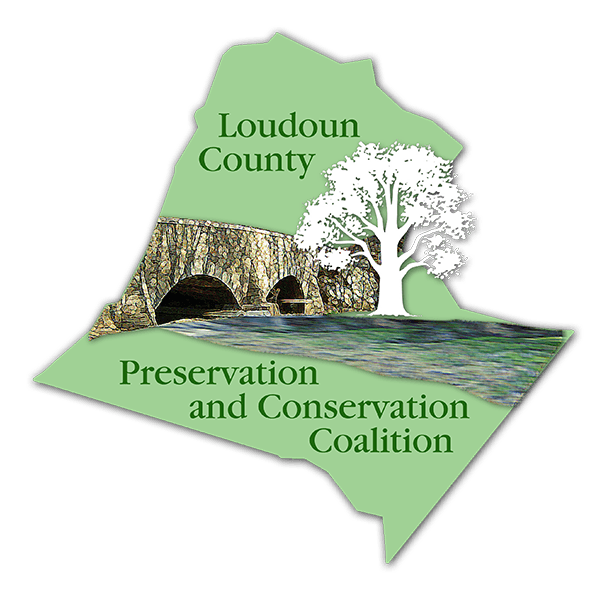
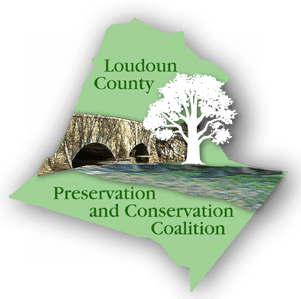
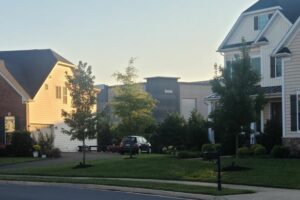
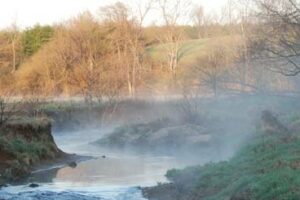
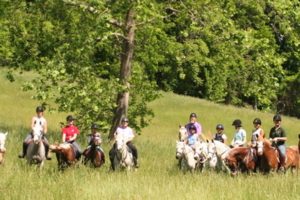
Leave a Reply
Your email is safe with us.